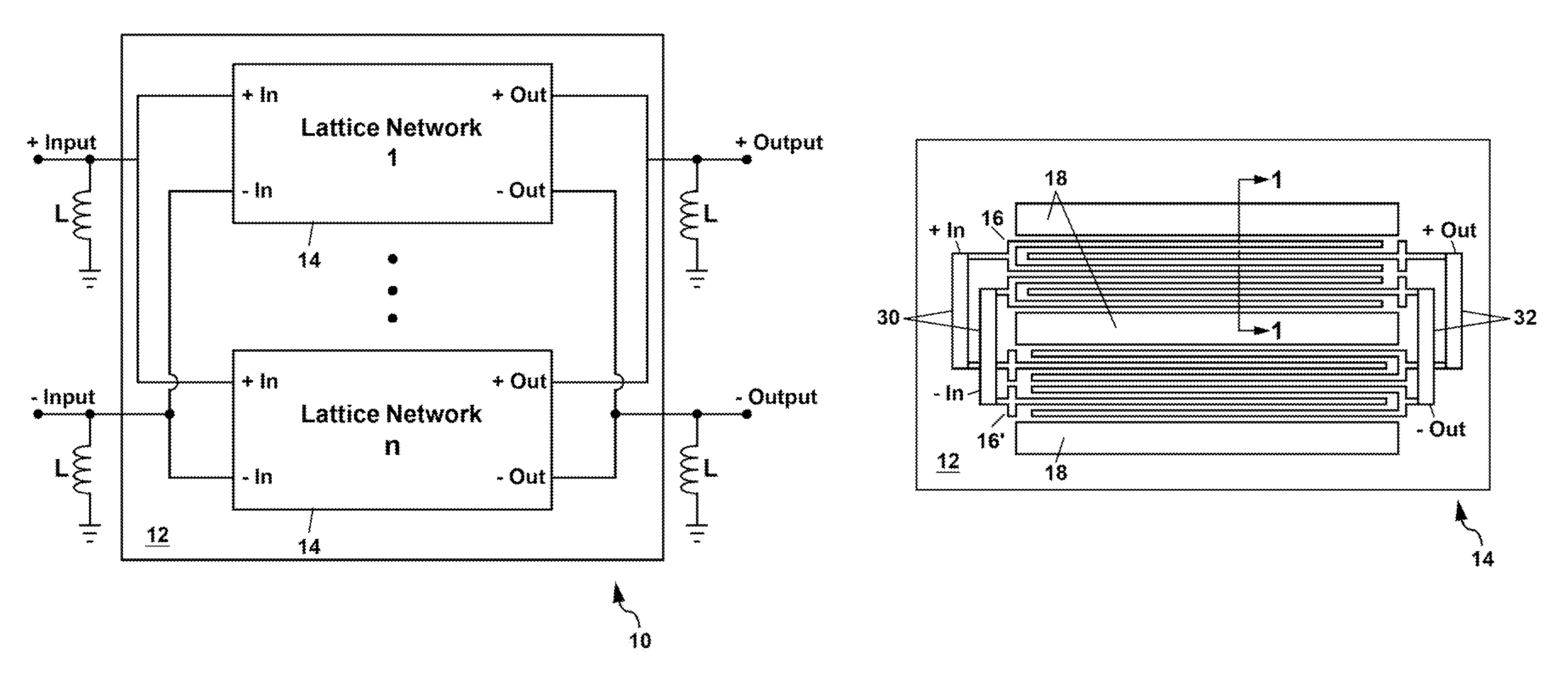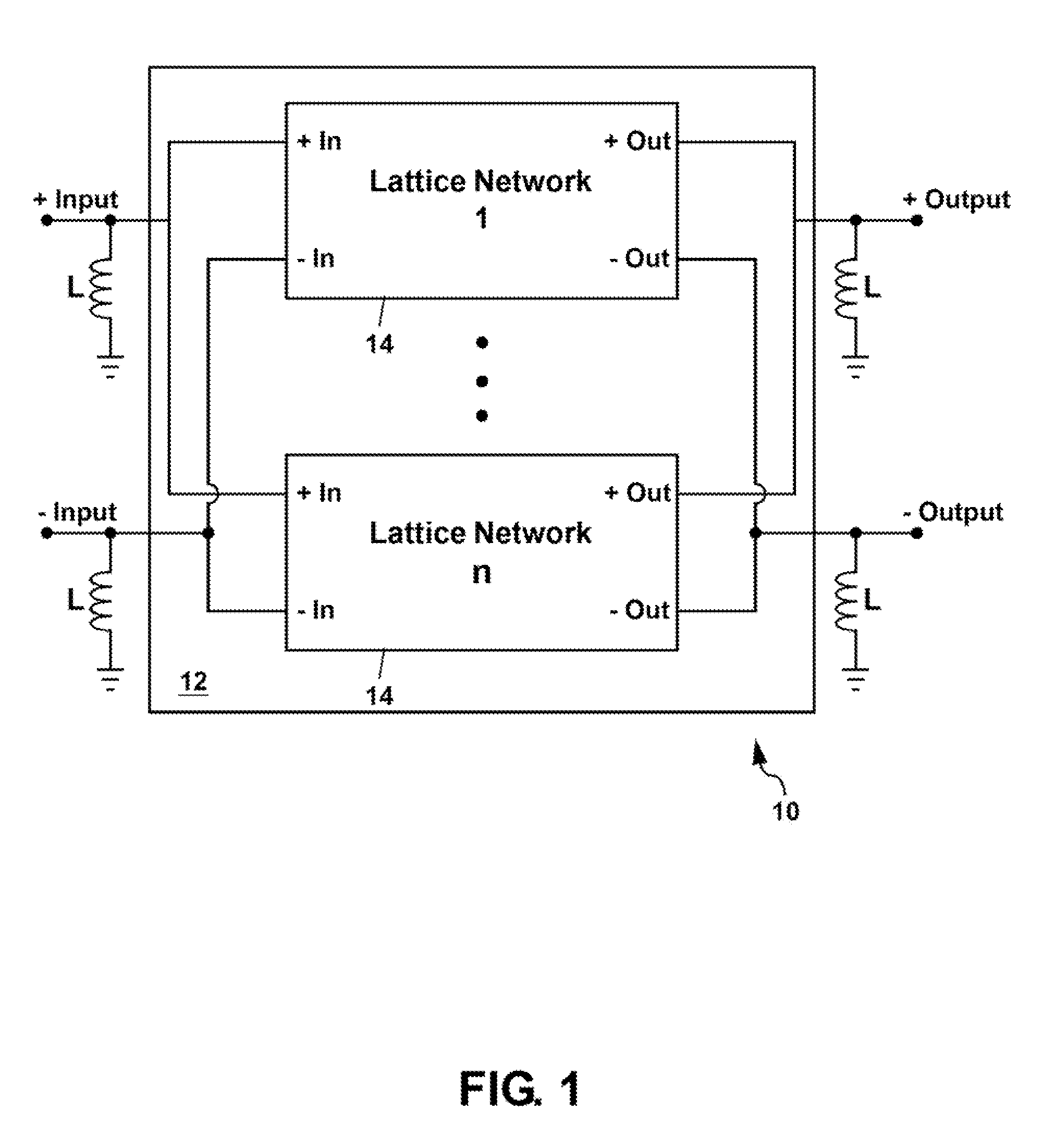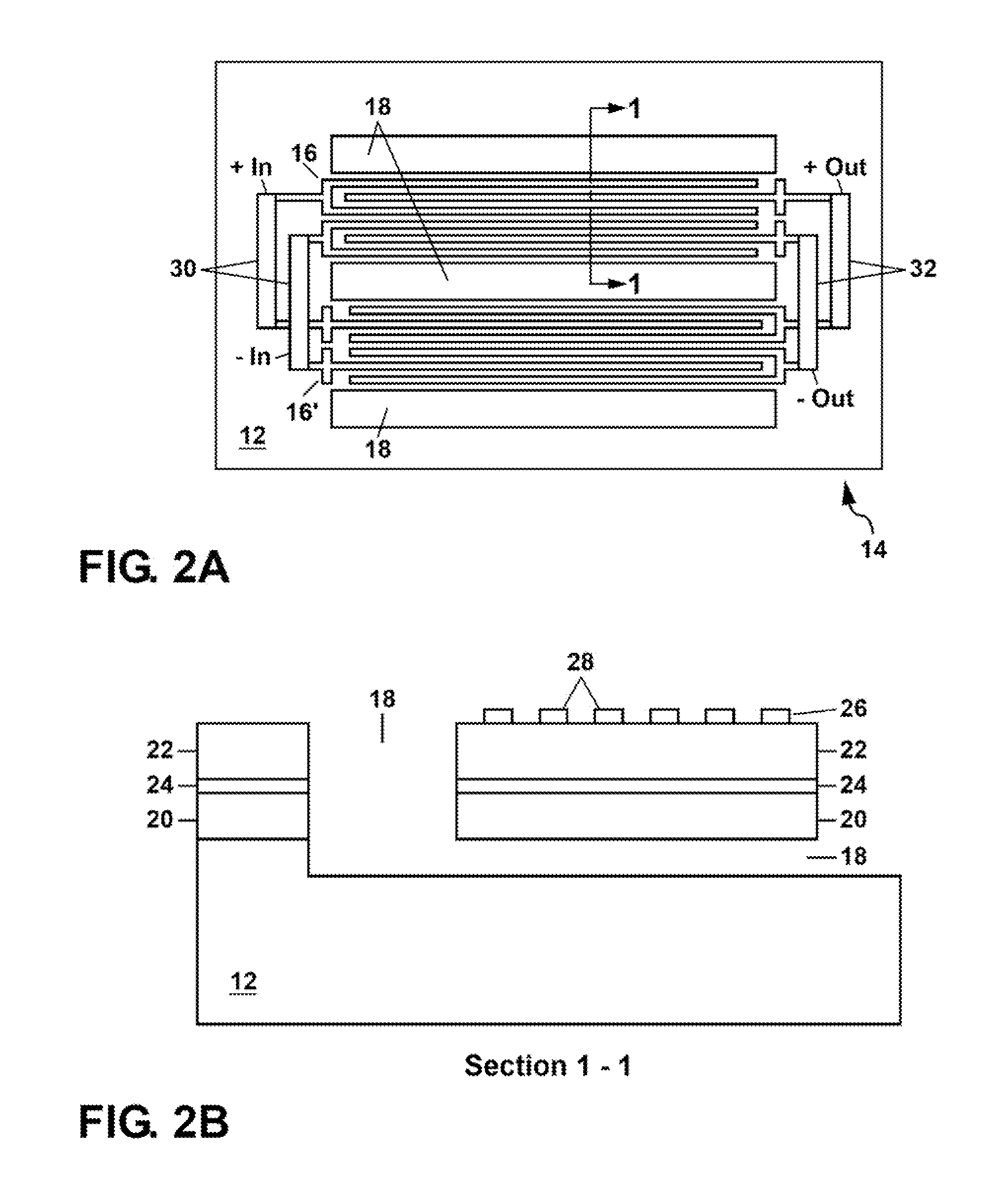Microelectromechanical filter formed from parallel-connected lattice networks of contour-mode resonators
a technology of contour-mode resonators and parallel connections, which is applied in piezoelectric/electrostrictive/magnetostrictive devices, piezoelectric/electrostriction/magnetostriction machines, etc., can solve the problem that each of the saws, baws and fbar technologies has limitations for forming large percent (>1%) bandwidth filters, and achieve the same input and output impedances. , the effect of same input and outpu
- Summary
- Abstract
- Description
- Claims
- Application Information
AI Technical Summary
Benefits of technology
Problems solved by technology
Method used
Image
Examples
Embodiment Construction
[0039]Referring to FIG. 1 there is shown a block diagram of a first example of a microelectromechanical (MEM) filter 10 of the present invention. In FIG. 1, the MEM filter 10 comprises substrate 12 on which a plurality n of lattice networks 14 are formed and electrically connected together in parallel. Although only two lattice networks 14 are shown in FIG. 1, those skilled in the art will understand that an arbitrary number n of lattice networks 14 can be provided on the substrate12 and electrically connected in parallel to form the MEM filter 10. Each lattice network 14 in the example of FIG. 1 can comprise one or more contour-mode resonators 16 as will be described in detail hereinafter to provide two different resonant frequencies (hereinafter referred to as a series resonant frequency fs and a shunt resonant frequency fsh) for that lattice network 14.
[0040]The phrase “electrically connected in parallel” is defined herein to mean that all of the inputs of a given type (e.g. +In ...
PUM
 Login to View More
Login to View More Abstract
Description
Claims
Application Information
 Login to View More
Login to View More - R&D
- Intellectual Property
- Life Sciences
- Materials
- Tech Scout
- Unparalleled Data Quality
- Higher Quality Content
- 60% Fewer Hallucinations
Browse by: Latest US Patents, China's latest patents, Technical Efficacy Thesaurus, Application Domain, Technology Topic, Popular Technical Reports.
© 2025 PatSnap. All rights reserved.Legal|Privacy policy|Modern Slavery Act Transparency Statement|Sitemap|About US| Contact US: help@patsnap.com



